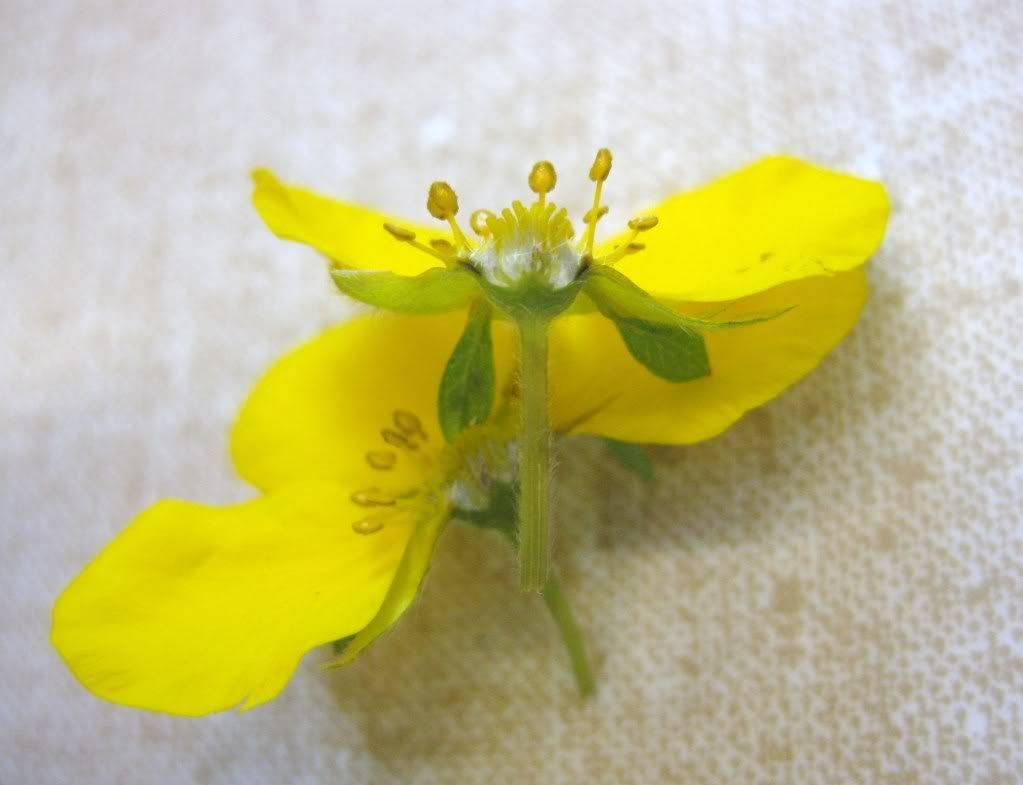ROSACEAE - Rose Family
---
A Prunus leaf - notice anything special?
Near the base of the leaf blade is a gland. This is characteristic to identify Prunus with.
Here is a flower of the Prunus. The following picture will be a longitudinal section of this flower.
The flower has a superior ovary and a hypanthium (the stamens, sepals and petals are fused)
A Potentilla flower. Doesn't this flower look strikingly similar to the Buttercup flower?
A Prunus leaf - notice anything special?
Near the base of the leaf blade is a gland. This is characteristic to identify Prunus with.
Here is a flower of the Prunus. The following picture will be a longitudinal section of this flower.
The flower has a superior ovary and a hypanthium (the stamens, sepals and petals are fused)
A Potentilla flower. Doesn't this flower look strikingly similar to the Buttercup flower?
A longitudinal section of the flower. Note the hypanthium and the many simple pistils.
If we take a look from the side we can make out certain characteristics of Rosaceae. Included in this picture are compound and stipulate leaves.
A closer look at the stipulate leaves. Members of the Ranunculaceae do not have this feature. Also, most of the buttercup leaves are lobed while the rose family does not? (not sure)
A compound leaf of Potentilla.
A matured flower of Potentilla with without its dried petals.
One of its many tiny seeds under a dissecting 'scope. It is formed from one carpel and indehiscent (do not open up at maturity); therefore, the fruit is an achene.
A few rose hips (the red fruits) of a Rosa plant.
A longitudinal section through the rose hips. The beige seeds are achenes and the fleshy, orange walls are the hypanthiums.
From this picture we can identify its flowers as "perigynous" because the hypanthiums are not completely fused together at the top. There are small gaps on the top of the fleshy walls.
















No comments:
Post a Comment